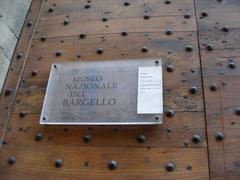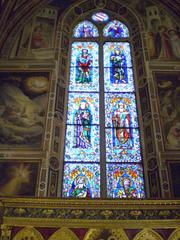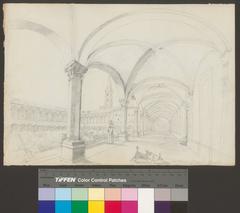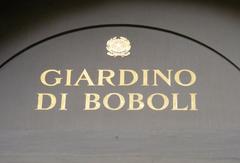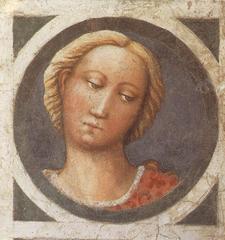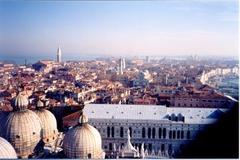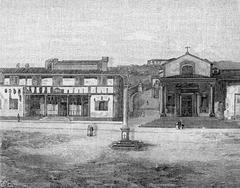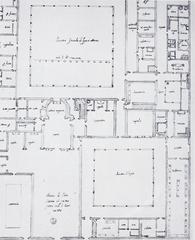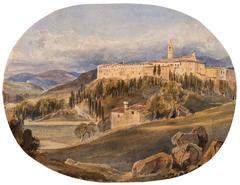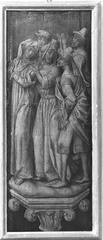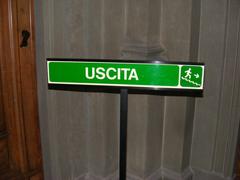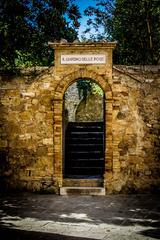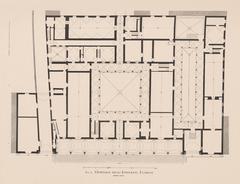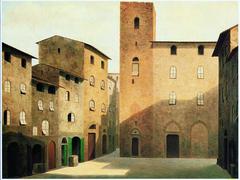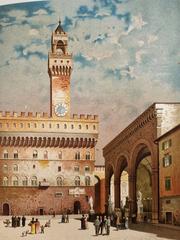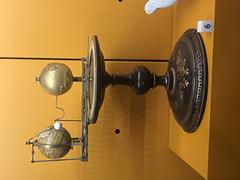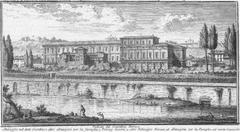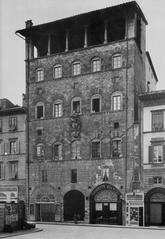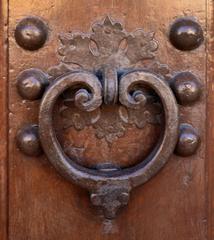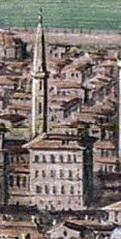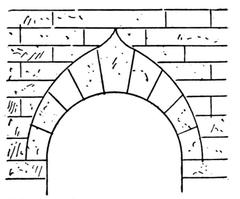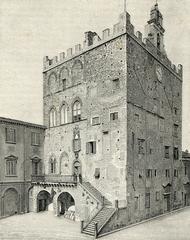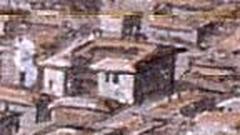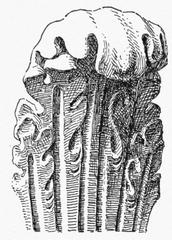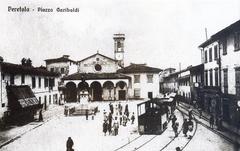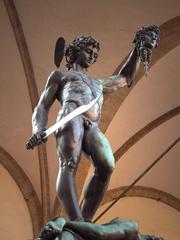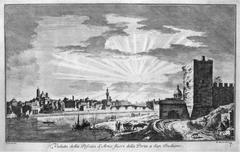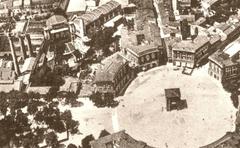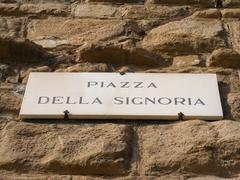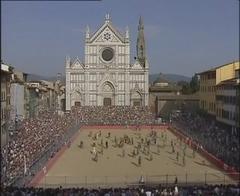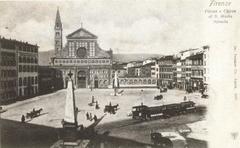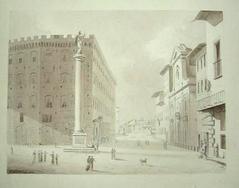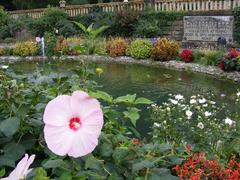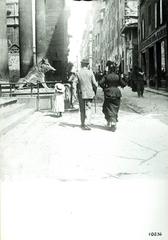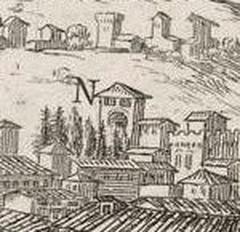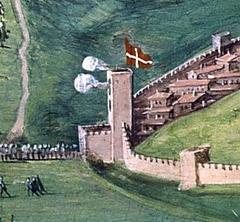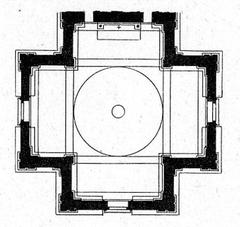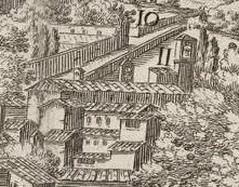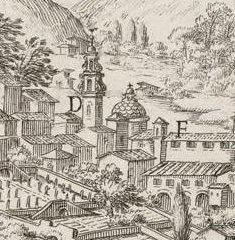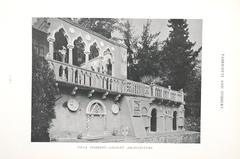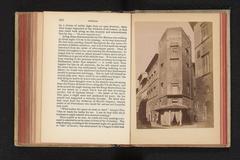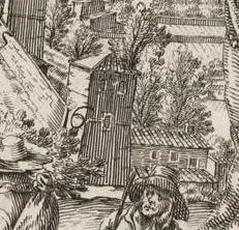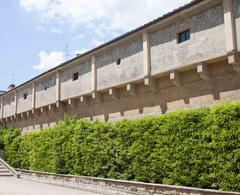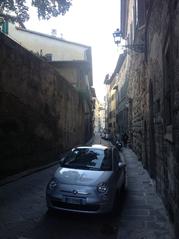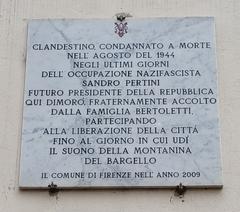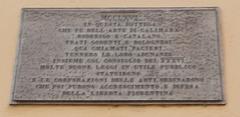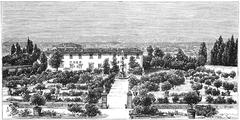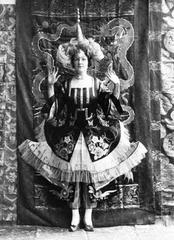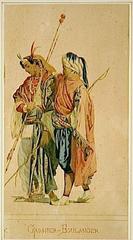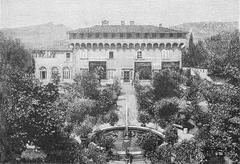Visiting Hours, Tickets, and Tips for Basilica di Santa Croce, Florence
Date: 17/07/2024
Introduction
The Basilica di Santa Croce, located in the heart of Florence, Italy, stands as a monumental testament to the city’s rich cultural, artistic, and religious heritage. Often referred to as the ‘Temple of the Italian Glories,’ this Gothic masterpiece is not merely a place of worship but also a burial site for some of Italy’s most illustrious figures, including Michelangelo, Galileo Galilei, Niccolò Machiavelli, and Gioachino Rossini. Constructed in 1294 under the supervision of renowned architect Arnolfo di Cambio, the basilica was built on the site of an earlier Franciscan chapel established shortly after the death of St. Francis of Assisi in 1228 (Florence Inferno). The church’s architectural style predominantly features Gothic elements, characterized by its pointed arches, ribbed vaults, and flying buttresses. However, its façade, completed in the 19th century by Niccolò Matas, showcases a neo-Gothic style with intricate marble inlays and a large central rose window (Visit Florence).
Beyond its architectural grandeur, the Basilica di Santa Croce has played a pivotal role in the religious and social life of Florence. It served as a center for the Franciscan order, known for its commitment to poverty, humility, and service to the poor. The basilica also became a significant burial place, earning it the nickname ‘Temple of the Italian Glories’ (Santa Croce Opera). Visitors are drawn not only by its historical and cultural significance but also by its impressive collection of artworks and frescoes by renowned artists such as Giotto di Bondone, Donatello, and Agnolo Gaddi (Santa Croce Opera).
Table of Contents
- [History of Basilica di Santa Croce, Florence, Italy](#history-of-basilica-di-santa-croce-florence-italyhistory-of-basilica-di-santa-croce-florence-italy)
- [Origins and Early Construction](#origins-and-early-constructionorigins-and-early-construction)
- [Architectural Style and Influences](#architectural-style-and-influencesarchitectural-style-and-influences)
- [Role in Florentine Society](#role-in-florentine-societyrole-in-florentine-society)
- [Notable Burials and Monuments](#notable-burials-and-monumentsnotable-burials-and-monuments)
- [Artistic Treasures and Frescoes](#artistic-treasures-and-frescoesartistic-treasures-and-frescoes)
- [Giotto di Bondone](#giotto-di-bondonegiotto-di-bondone)
- [Donatello](#donatellodonatello)
- [Agnolo Gaddi](#agnolo-gaddiagnolo-gaddi)
- [Visitor Information](#visitor-informationvisitor-information)
- [Visiting Hours and Tickets](#visiting-hours-and-ticketsvisiting-hours-and-tickets)
- [Travel Tips](#travel-tipstravel-tips)
- [Nearby Attractions](#nearby-attractionsnearby-attractions)
- [Accessibility](#accessibilityaccessibility)
- [Restoration and Preservation](#restoration-and-preservationrestoration-and-preservation)
- [Modern Significance](#modern-significancemodern-significance)
- [FAQ](#faqfaq)
- [Conclusion](#conclusionconclusion)
- [References](#referencesreferences)
History of Basilica di Santa Croce, Florence, Italy
Origins and Early Construction
The Basilica di Santa Croce is one of the most significant Franciscan churches in the world. Its origins date back to the late 13th century. The initial construction began in 1294, under the design and supervision of the renowned architect Arnolfo di Cambio. The church was built on the site of a small chapel that had been established by the Franciscans in 1228, shortly after the death of St. Francis of Assisi. The construction of the basilica was part of a broader movement to create monumental churches that could accommodate large congregations and serve as centers of religious and social life (Florence Inferno).
Architectural Style and Influences
The architectural style of the Basilica di Santa Croce is predominantly Gothic, characterized by its pointed arches, ribbed vaults, and flying buttresses. Arnolfo di Cambio’s design was influenced by the French Gothic style, which was adapted to the local Florentine context. The basilica’s façade, however, was not completed until the 19th century, designed by Niccolò Matas in a neo-Gothic style. The façade features intricate marble inlays and a large central rose window, which are hallmarks of Gothic architecture (Visit Florence).
Role in Florentine Society
Throughout its history, the Basilica di Santa Croce has played a crucial role in the religious, cultural, and social life of Florence. It served as a center for the Franciscan order, which was known for its commitment to poverty, humility, and service to the poor. The basilica also became a burial place for many of Florence’s most illustrious citizens, earning it the nickname “Temple of the Italian Glories” (Santa Croce Opera).
Notable Burials and Monuments
The Basilica di Santa Croce is renowned for its numerous funerary monuments and tombs of prominent figures from Italian history. Among the most famous individuals buried here are:
- Michelangelo Buonarroti: The renowned Renaissance artist and sculptor, known for masterpieces such as the Sistine Chapel ceiling and the statue of David, was buried in Santa Croce in 1564. His tomb, designed by Giorgio Vasari, features allegorical figures representing Painting, Sculpture, and Architecture (Michelangelo’s Tomb).
- Galileo Galilei: The pioneering astronomer and physicist, who made significant contributions to the scientific revolution, was buried in Santa Croce in 1642. His tomb, designed by Giovanni Battista Foggini, includes a bust of Galileo and allegorical figures representing Astronomy and Geometry (Galileo’s Tomb).
- Niccolò Machiavelli: The political philosopher and author of “The Prince,” Machiavelli was buried in Santa Croce in 1527. His tomb, designed by Innocenzo Spinazzi, features a bust of Machiavelli and an inscription that reads “Tanto nomini nullum par elogium” (No eulogy is equal to such a name) (Machiavelli’s Tomb).
- Gioachino Rossini: The famous composer, known for operas such as “The Barber of Seville” and “William Tell,” was buried in Santa Croce in 1887. His tomb is a testament to his enduring legacy in the world of music (Rossini’s Tomb).
Artistic Treasures and Frescoes
Giotto di Bondone
Giotto, one of the pioneers of Renaissance art, painted a series of frescoes in the Bardi and Peruzzi Chapels. These frescoes depict scenes from the lives of St. Francis and St. John the Baptist and are considered masterpieces of early Renaissance art (Giotto’s Frescoes).
Donatello
The renowned sculptor Donatello created the “Annunciation” relief, which is located in the Cavalcanti Chapel. This work is notable for its delicate carving and expressive figures (Donatello’s Annunciation).
Agnolo Gaddi
Gaddi, a prominent Florentine painter, created the fresco cycle in the main apse, depicting the Legend of the True Cross. These frescoes are significant for their narrative complexity and vibrant colors (Gaddi’s Frescoes).
Visitor Information
Visiting Hours and Tickets
The Basilica di Santa Croce is open to visitors from Monday to Saturday, 9:30 AM to 5:00 PM, and on Sundays and public holidays, 2:00 PM to 5:00 PM. Ticket prices are as follows:
- Adults: €8
- Children (11-17 years): €6
- Children (under 11): Free
- Family Ticket (2 adults + 2 children): €20
Tickets can be purchased online or at the basilica’s ticket office. For more information on ticket prices and visiting hours, visit the official Santa Croce website.
Travel Tips
- Best Time to Visit: The best time to visit the Basilica di Santa Croce is during the early morning or late afternoon to avoid large crowds.
- Dress Code: As with most religious sites, visitors are expected to dress modestly. Shoulders and knees should be covered.
- Guided Tours: Consider joining a guided tour to gain deeper insights into the history and art of the basilica.
Nearby Attractions
The Basilica di Santa Croce is located in the heart of Florence, making it easy to visit other nearby attractions:
- Uffizi Gallery: Just a 10-minute walk away, the Uffizi Gallery is home to an extensive collection of Renaissance art.
- Piazza della Signoria: A historic square featuring the Palazzo Vecchio and several notable statues, including a replica of Michelangelo’s David.
- Ponte Vecchio: This iconic medieval bridge over the Arno River is lined with shops and offers stunning views of the city.
Accessibility
The Basilica di Santa Croce is committed to providing access for all visitors. The main entrance is wheelchair accessible, and there are ramps and lifts available within the basilica. For more detailed information on accessibility, visit the official Santa Croce accessibility page.
Restoration and Preservation
Over the centuries, the Basilica di Santa Croce has undergone numerous restorations and preservation efforts to maintain its structural integrity and artistic heritage. One of the most significant restoration projects took place in the 19th century, led by the architect Gaetano Baccani. This project included the completion of the façade and the restoration of several chapels and frescoes (Restoration Efforts).
In recent years, the basilica has continued to be a focus of preservation efforts, particularly following the devastating flood of 1966, which caused significant damage to the church and its artworks. The Opificio delle Pietre Dure, a renowned restoration institute in Florence, has played a key role in the ongoing conservation of the basilica’s treasures (1966 Flood).
Modern Significance
Today, the Basilica di Santa Croce remains a vital part of Florence’s cultural and religious landscape. It continues to attract visitors from around the world who come to admire its architectural beauty, artistic masterpieces, and historical significance. The basilica also serves as a venue for cultural events, concerts, and religious ceremonies, maintaining its role as a living monument to Florence’s rich heritage (Cultural Events).
FAQ
1. What are the Basilica di Santa Croce visiting hours? The basilica is open Monday to Saturday from 9:30 AM to 5:00 PM, and on Sundays and public holidays from 2:00 PM to 5:00 PM.
2. How much do tickets to the Basilica di Santa Croce cost? Tickets cost €8 for adults, €6 for children aged 11-17, and are free for children under 11. A family ticket (2 adults + 2 children) is available for €20.
3. Are guided tours available at the Basilica di Santa Croce? Yes, guided tours are available and highly recommended for those who wish to gain deeper insights into the basilica’s history and art.
4. Is the Basilica di Santa Croce wheelchair accessible? Yes, the basilica is wheelchair accessible, with ramps and lifts available for ease of movement.
Conclusion
The Basilica di Santa Croce in Florence is not just a remarkable architectural and artistic treasure, but also a symbol of the city’s rich cultural and religious heritage. From its Gothic design to its notable burials and artistic masterpieces, the basilica offers a deep and multifaceted experience for visitors. Plan your visit to this iconic Florence historical site and immerse yourself in its history and beauty.
For more information, check out our other articles on Florence’s historical sites and download our app Audiala for personalized travel tips and updates.
References
- Florence Inferno. (n.d.). Exploring the Basilica di Santa Croce in Florence - History, Art, and Visitor Information. https://www.florenceinferno.com/santa-croce-church/
- Visit Florence. (n.d.). Visiting the Basilica di Santa Croce in Florence - History, Tickets, and Visitor Information. https://www.visitflorence.com/florence-churches/santa-croce.html
- Santa Croce Opera. (n.d.). Basilica di Santa Croce. https://www.santacroceopera.it/en/monument/
- The Florentine. (2020, January 15). Visiting the Basilica di Santa Croce in Florence - History, Tickets, and Visitor Information. https://www.theflorentine.net/2020/01/15/santa-croce-florence/
